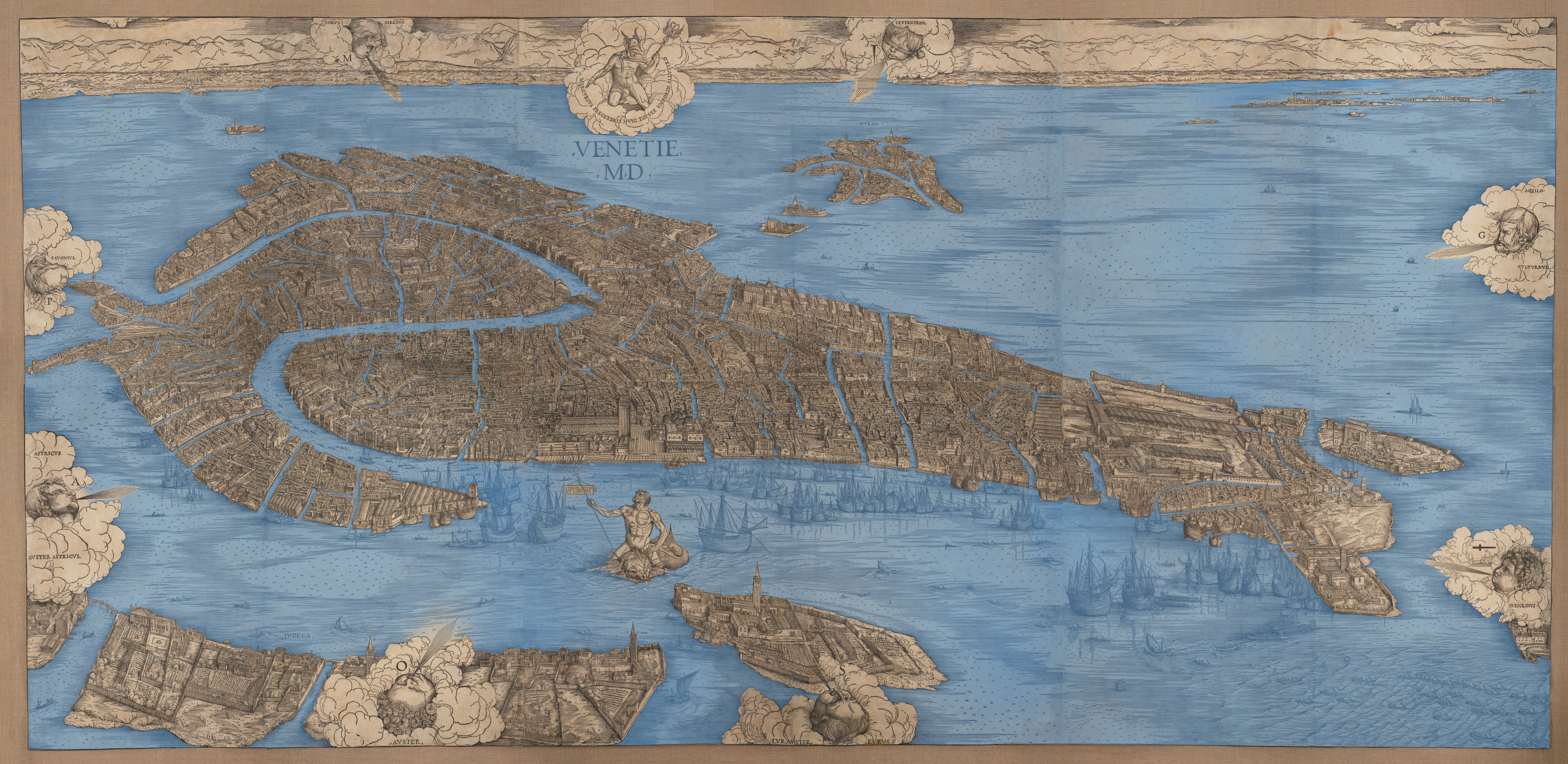Jacopo de' Barbari's View of Venice, 1497-1500
Jacopo de’ Barbari, View of Venice, ca. 1497-1500
Woodcut from six pear wood blocks and printed on six sheets of paper by Anton Kolb.
Original blocks are held at The Museo Correr in Venice, Italy
52.25 x 109.25 inches
Jacopo de’ Barbari’s bird’s eye view of Venice captures with extraordinary and unprecedented detail the buildings, urban infrastructure, canals, and boat traffic of Venice and its lagoon as they appeared at the beginning of the sixteenth-century. The View is framed by representations of Mercury (god of commerce) and Neptune (god of the sea), reflecting the city’s key cultural interests. The gods anchor the composition on an implied axis that runs through the civic center at Piazza San Marco. Also included around the edges are representations of the eight winds, and the terrafirma occupies the top edge. Some buildings and all of the winds are labeled, while Mercury and Neptune are identified by their respective attributes (the caduceus and the trident) and inscriptions that confirm their importance to Venice.
On 30 October 1500, publisher Anton Kolb was granted a copyright allowing him to reproduce the print for a period of four years, but his request to be exempted from taxes was denied.
Twelve first state prints are known to survive, and can be identified by a couple of important details. One is the flat roof on the campanile in Piazza San Marco, which was damaged in a fire in 1489, and later reconstructed in the pyramidal shape we see today. Later prints also differ from the originals in that the date (MD) was removed from the later blocks.
Scholars have long puzzled over how de’ Barbari produced this precise record of the city since it was impossible to gain an aerial perspective; the most convincing theory is that drawings were made from the vantage point of the belltowers. Indeed, it is believed that the View was constructed from multiple perspectives. But even this approach would not have produced the bird's eye View we appreciate in the print. De’ Barbari takes advantage of the figures of the personified winds and their air currents to cover areas of the city that must have been hard to view.
Another question is how the View was originally meant to be seen – as separate sheets; connected together and attached to a canvas for display on a wall; or laid out on a table. Each of these methods would have produced a different spatial reading.
The de’ Barbari View remained the principal referent for all subsequent perspectival representations of the city of Venice.
Essential bibliography:
Juergen Schulz, “Jacopo de Barbari’s view of Venice: Map Making, City Views, and Moralized Geography before the year 1500,” The Art Bulletin, 60:3 (September 1976), 425-74.
Deborah Howard, “Venice as a Dolphin: Further Investigations into Jacopo de’ Barbari’s View,” Artibus et Historiae, 18:35 (1997), 101-11.
Corrado Balistreri Trincanato, Emiliano Balistreri, Anna Maria Ghion, and Dario Zanverdiani, Venezia Città Mirabile: Giuda alla veduta prospettica di Jacopo de' Barbari (Caselle di Sommacampagna: Cierre edizioni, 2009).
